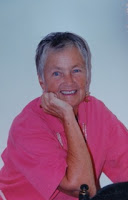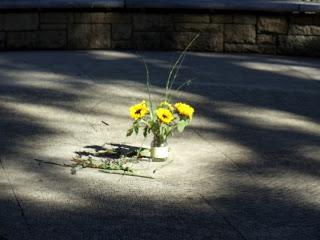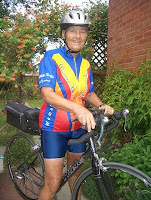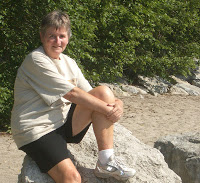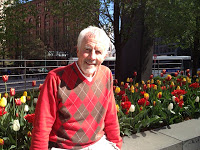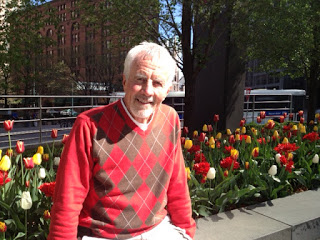I do not own a recliner. In fact I never have owned one. I do not recall ever having one in our house when I was growing up. So I cannot say I really miss having a recliner. But I cannot say I never sit in one either because I have utilized certain recliners throughout my life. At this time in my life I find myself in one twice a year on a rather consistent basis.
I have always been conscientious about taking care of my teeth. Early in life my parents made me do that. So I guess I developed a good habit then which I continued into adulthood.
As a child my visits to the dentist were frequent. Like most children I dreaded them. I regarded them as trips to the torture chamber. The day my baby teeth were all gone and my permanent teeth were in place, my dental problems began and so too my frequent visits to the torture chamber began.
I was never offered the option of fluoride to protect my teeth which teeth were above average in their propensity to decay. In the 1940’s when fluoridation of water was first introduced, it was from the start controversial. In the 1950’s and 60’s fluoridation of the public water supply was regarded by some as a communist plot to undermine the health of the people of the United States. This belief had been especially entrenched on the east coast where I lived. Consequently it was not until I was about 60 years old then I had my first fluoride treatment.
By then, however, I had had most of my molars drilled out to nubbins and filled with amalgam which lasts about 40-50 years. When I came to Colorado in1970 and had my first appointment, every new dentist I had said the same thing. “Now open please. Ohhhh, hmmmm, I see you’re from the east coast. Your teeth seem to be in good repair—mostly repair.” Well, my fillings had been there for 40-50 years and they were beginning to crumble.
Fortunately I had a wonderful dentist when I was in my 50’s and 60’s. I had a good job which provided some kind of dental insurance. My dentist said to me, “ We have to replace all your repaired teeth with crowns.” That meant almost all my molars needed crowns. It took about ten years to accomplish that. It got so that every visit to the dentist when I walked in the door the staff would announce , “Betsy’s here for another coronation!” Dr. Jones said to me once, “I only know one other person who has more crowns in her mouth than you, and that’s my wife.” Anyway those crowns are still serving me well today. I would love to have some of the glue they use to glue them on. Wow, what a glue that is—really strong and never dries out.
They say you can’t remember pain. Maybe you can’t recreate it, but I sure can remember it was painful in that early torture chamber. That was before they used novocain. And the drill was so very slow. Dr Bienville, my childhood dentist, was not my favorite person. He would hold the drill in his hand and say, “This won’t hurt.” I knew good and well it would hurt. The instant the torture devise touched my tooth the nerve would send a searing hot pain down my arm to the ends of my fingernails or leg and toenails depending on the tooth being drilled. Yes, it was torture. And it would go on for what seemed like hours.
My teenage dentist was not much better. By then we had novocain and once that was very painfully injected into my gum, I knew there was a God. Mercifully, no pain while drilling.
Getting the injection was painful, the needles were huge, but the pain of the needle didn’t endure for hours like the drilling.
Dr. Young, however, had other means of causing discomfort. He, not so young, loved young women. He was always trying to wipe his hands on my bib, right in the area of……..well you can guess. Yes, he did that. I had been warned about this by my friends, and didn’t think he would try it on me, but sure enough, he did. From then on, I took to sitting with my arms crossed over my chest when his hands were free. He got the message and probably worried that I might tell my mother.
Today I really don’t mind going to the dentist. His cute young always female assistants do all the work and they are gentle and friendly chatting away as I sit there unable to form a word in reply.
I have to say I am a bit intimidated by the exam which entails her probing the edges of my gums and announcing a number from 1-5 depending on how bad the gap between my tooth and the gum is. A quick probe and the number is announced and recorded. I dread hearing “3” as that’s a bad score for any tooth. Several fours and I know I’m in trouble. I always feel like I’m on trial when they do that exam. Will I pass, or will I get scolded for not flossing enough. Flossing, they say, is essential for healthy gums. I must say their strategy is effective. I find myself flossing all the time so I’ll get a good score. They know I like to compete even against my own gums. It works.
Over my lifetime I have not just observed—I have experienced huge strides in the practice of dentistry. A clear journey from the torture chamber to the recliner and pain free application of new techniques and preventive treatments.
I also realize I have been one of the fortunate ones. Even though my teeth were prone to decay easily, I have lived a long life with the same teeth, at least the roots. And the bad parts have been repaired and replaced so that I enjoy a healthy mouthful of efficient chewing machines. This is something for which I am very grateful. Had I not had any dental care I know I would not have any teeth—at least not my own—and along with that I would be having chronic problems with my mouth and who knows, probably problems with my overall health as lack of dental care can cause many general health problems.
So thank you, thank you to all my dentists and their cute young technicians in whose recliners in which I have been fortunate enough to lie.
© 3 February 2017
About the Author
Betsy has been active in the GLBT community including PFLAG, the Denver Women’s Chorus, OLOC (Old Lesbians Organizing for Change), and the GLBT Community Center. She has been retired from the human services field for 20 years. Since her retirement, her major activities have included tennis, camping, traveling, teaching skiing as a volunteer instructor with the National Sports Center for the Disabled, reading, writing, and learning. Betsy came out as a lesbian after 25 years of marriage. She has a close relationship with her three children and four grandchildren. Betsy says her greatest and most meaningful enjoyment comes from sharing her life with her partner of 30 years, Gillian Edwards.
